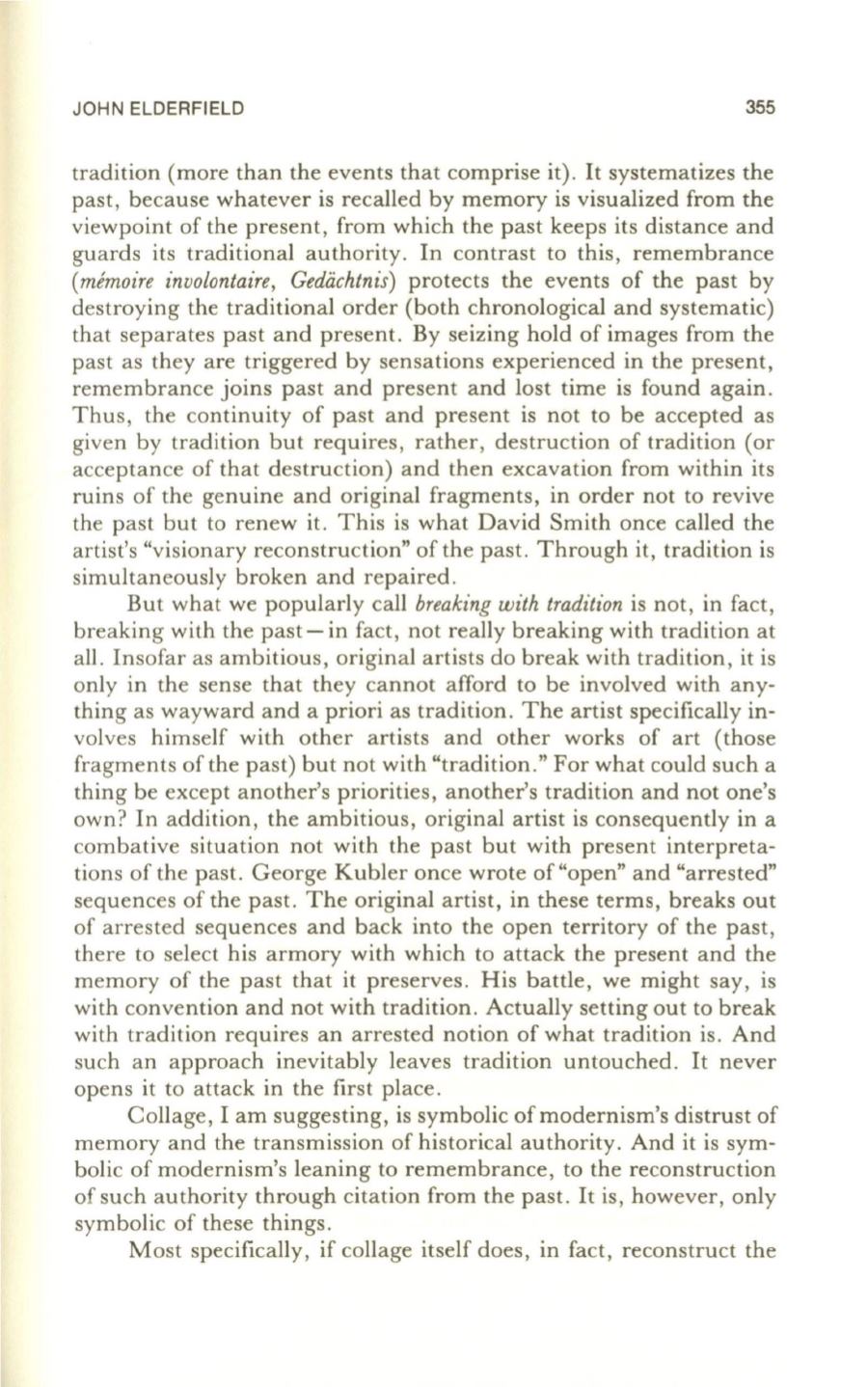
JOHN ELDERFIELD
355
tradition (more than the events that comprise it).
It
systematizes the
past, because whatever is recalled by memory is visualized from the
viewpoint of the present, from which the past keeps its distance and
guards its traditional authority. In contrast to this, remembrance
(memoire involontaire, Gedachtnis)
protects the events of the past by
destroying the traditional order (both chronological and systematic)
that separates past and present. By seizing hold of images from the
past as they are triggered by sensations experienced in the present,
remembrance joins past and present and lost time is found again.
Thus, the continuity of past and present is not to be accepted as
given by tradition but requires, rather, destruction of tradition (or
acceptance of that destruction) and then excavation from within its
ruins of the genuine and original fragments, in order not to revive
the past but to renew it. This is what David Smith once called the
artist's "visionary reconstruction" of the past. Through it, tradition is
simultaneously broken and repaired.
But what we popularly call
breaking with tradition
is not, in fact,
breaking with the past - in fact, not really breaking with tradition at
all. Insofar as ambitious, original artists do break with tradition, it is
only in the sense that they cannot afford to be involved with any–
thing as wayward and a priori as tradition. The artist specifically in–
volves himself with other artists and other works of art (those
fragments of the past) but not with "tradition." For what could such a
thing be except another's priorities, another's tradition and not one's
own? In addition, the ambitious, original artist is consequently in a
combative situation not with the past but with present interpreta–
tions of the past. George Kubler once wrote of "open" and "arrested"
sequences of the past. The original artist, in these terms, breaks out
of arrested sequences and back into the open territory of the past,
there to select his armory with which to attack the present and the
memory of the past that it preserves. His battle, we might say, is
with convention and not with tradition. Actually setting out to break
with tradition requires an arrested notion of what tradition is. And
such an approach inevitably leaves tradition untouched.
It
never
opens it to attack in the first place.
Collage, I am suggesting, is symbolic of modernism's distrust of
memory and the transmission of historical authority. And it is sym–
bolic of modernism's leaning to remembrance, to the reconstruction
of such authority through citation from the past.
It
is, however, only
symbolic of these things.
Most specifically, if collage itself does, in fact, reconstruct the


